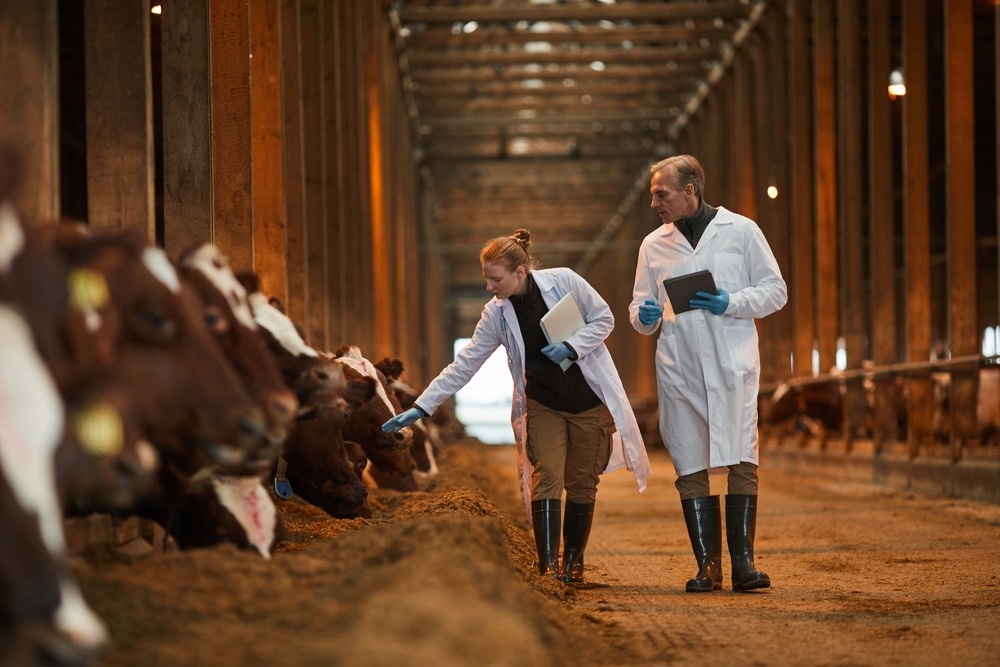One Medicine: Bridging the Gap Between Human and Animal Health

Understanding the One Medicine approach
Zoonotic diseases: a shared challenge
The role of veterinarians in public health
Shared benefits: advancing medicine for humans and animals
Environmental factors and health
References
Further reading
“One Medicine” is a concept that emphasizes the interconnectedness of human and animal health. Understanding and addressing the shared health challenges between humans and animals is crucial, as it not only safeguards public health but also promotes animal welfare, environmental conservation, and a sustainable future for all species.

Image Credit: Varvara Serebrova/Shutterstock.com
Understanding the One Medicine approach
One Medicine is a holistic approach that highlights the interaction between human, animal, and environmental health. The fundamental principles of this concept involve the understanding that humans and animals have a mutually beneficial or symbiotic relationship that, if neglected, could have repercussions.
One of the central principles of the approach is the awareness that diseases can seamlessly cross species barriers, a phenomenon known as zoonotic transmission.
By acknowledging and addressing these shared health challenges, proactive measures can be taken to prevent and reduce the consequences of such disease transmissions.
The approach aims to prevent and mitigate these consequences by implementing monitoring measures, controlling diseases in both human and animal populations, improving healthcare systems, enhancing disease surveillance, and promoting responsible animal care and environmental awareness.
Zoonotic diseases: a shared challenge
Diseases can seamlessly pass between species, a process known as zoonotic transmission. This transmission occurs when pathogens, including bacteria, viruses, or parasites, jump from animals to humans or vice versa.
Zoonotic diseases pose significant public health threats and can trigger global health crises. A notable example is COVID-19, believed to have originated from a wildlife source, rapidly spreading globally, causing a pandemic.
Another glaring example is Ebola, believed to have originated from fruit bats. Once the virus entered the human population, it was transmitted from person to person through direct contact with the body fluids of infected individuals. Ebola had a high mortality rate, with symptoms being extremely severe and complex.
Collaboration between medical and veterinary experts is imperative for monitoring, preventing, and controlling these zoonotic diseases. Early detection in animals can serve as an early warning system for potential human outbreaks.
The role of veterinarians in public health
Veterinarians are vital to the One Medicine approach, using their knowledge and expertise to bridge the gap between human and animal health.
They are at the forefront of monitoring and early detection of diseases, actively observing and assessing animal populations for any indication of illness, and identifying possible zoonotic risks before they escalate into significant public health emergencies.
Veterinarians play a huge role in executing vaccination initiatives, promoting responsible animal husbandry methods, and conducting research to understand the transmission dynamics of these diseases. Their efforts protect animals while also decreasing the risk of these diseases spreading to human populations.

Image Credit: SeventyFour/Shutterstock.com
Diligent work is put in to ensure that animal-derived products such as meat, dairy, and eggs adhere to strict safety standards. This effort by veterinarians protects public health by preventing the transmission of harmful pathogens from animals to humans through food consumption.
Shared benefits: advancing medicine for humans and animals
Explore how advancements in medical research and treatment benefit both humans and animals. Discuss instances where veterinary treatments have informed human medicine and vice versa, showcasing the potential for mutual learning and progress.
Advancements in medical research and treatment can benefit humans and animals. Orthopedic procedures such as joint replacement and fracture repair have improved due to insights and technology derived from veterinary expertise.
Oncology is a healthcare realm where humans and animals share many biological similarities, leading to collaborative research between veterinarians and medical scientists to create innovative therapies and treatment approaches. Certain cancer drugs, including Paclitaxel, were initially used to treat cancer in animals but are now used to treat human cancers such as breast cancer.
Environmental factors and health
Environmental factors can significantly affect the health of both humans and animals. Factors such as pollution, habitat loss, and climate change can influence the transmission and emergence of diseases. These factors must be mitigated in a collaborative effort for the welfare of all species.
Substances such as chemicals and heavy metals can contaminate the air, water, or soil, putting both humans and animals at risk. They can cause various health problems, ranging from damage to their nervous systems, immunity, and their ability to reproduce. Collective efforts aimed at reducing pollution play a critical role in protecting public health and maintaining ecosystem health.
Climate change has had a huge impact on health. The change in temperature and precipitation patterns can affect the distribution of mosquitos and ticks, disease-carrying vectors of malaria and Lyme disease. This can result in the spread of these diseases into new regions.
Collaboration between scientists, healthcare professionals, environmentalists, and governments can create global initiatives to combat climate change and the risk it poses to public health.
Embracing the One Medicine approach is a significant way to address shared health challenges. Emphasis is put on the need for a collaborative effort between disciplines to tackle common health issues. By recognizing this interdependence, we can ensure that the health of all species is safeguarded, preventing disease transmission, ensuring food safety, and preserving our ecosystems.
References
- Abu Samaan, T.M., Samec, M., Liskova, A., Kubatka, P. and Büsselberg, D. (2019). Paclitaxel’s Mechanistic and Clinical Effects on Breast Cancer. Biomolecules, 9(12), p.789. doi:https://doi.org/10.3390/biom9120789.
- Gyles, C. (2016). One Medicine, One Health, One World. The Canadian veterinary journal = La revue veterinaire canadienne, [online] 57(4), pp.345–6. Available at: https://www.ncbi.nlm.nih.gov/pmc/articles/PMC4790223/.
- Silva, D.M., Franciosi, A.I., Pezzini, P.C.F. and Guérios, S.D. (2015). Subcutaneous administration of paclitaxel in dogs with cancer: A preliminary study. The Canadian Veterinary Journal, [online] 56(8), pp.823–830. Available at: https://www.ncbi.nlm.nih.gov/pmc/articles/PMC4502849/ [Accessed 17 Sep. 2023].
- Travis, D.A., Sriramarao, P., Cardona, C., Steer, C.J., Kennedy, S., Sreevatsan, S. and Murtaugh, M.P. (2014). One Medicine One Science: a framework for exploring challenges at the intersection of animals, humans, and the environment. Annals of the New York Academy of Sciences, 1334(1), pp.26–44. doi:https://doi.org/10.1111/nyas.12601.
Further Reading
- All Public Health Content
- Social Media, Pseudoscience, and Misinformation: the impact on public understanding of health and medical science
Last Updated: Sep 20, 2023

Written by
Jenna Philpott
Jenna graduated from Nottingham Trent University in 2022 with a BSc in Biochemistry. She achieved a first in her undergraduate research project which concerned the role of metabolic stress on pancreatic beta cell function, investigating its contribution to the development of type 2-diabetes mellitus (T2DM). The study highlighted the importance of understanding molecular pathways in beta cells for developing prevention measures and new therapeutic options for T2DM.